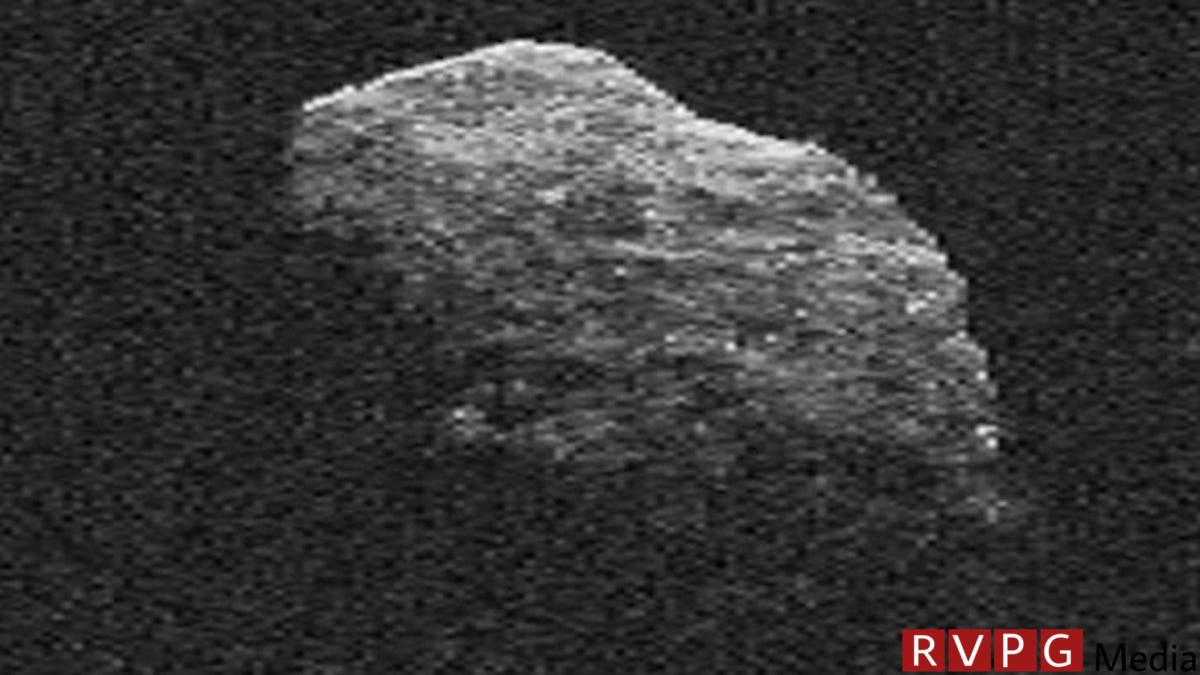In about five years, a potentially dangerous asteroid will fly past Earth at an uncanny distance of less than 20,000 miles (32,000 kilometers). In this rare encounter, Apophis will be ten times closer to Earth than the moon, and scientists want to take full advantage of his visit.
Apophis is on its way to a flyby of Earth on April 13, 2029. When first discovered in 2004, the 1,100-foot (335-meter) diameter near-Earth object was described as a dangerous asteroid that could hit our planet. However, later observations confirmed to scientists that there was no reason to panic yet and that the asteroid had already panicked no chance of crashing to Earth for at least another century.
This is very good news given the size of this object and the severe damage it would cause if it were to one day hit our planet. Hopefully that never happens, but objects this size hit Earth about once every 80,000 years, causing catastrophic damage and winters that impact the entire world.
During its upcoming flyby, scientists plan to study the asteroid to find out whether Earth’s gravitational field will have an impact on Apophis’ orientation, composition and rotation. This could, for example, lead to asteroid earthquakes, causing a shift in the distribution of its materials inside or changing the appearance of its surface. Scientists hope to map these possible changes by comparing observations of the asteroid before and after its encounter with Earth in 2029. Physical changes to the asteroid could alter its orbit, which is why scientists want to clearly document this.
Private space companies such as Blue Origin and the startup Exploration Labs, or ExLabs, have proposed missions to rendezvous with Apophis ahead of the expected flyby, SpaceNews reported. During a recent workshop at a European Space Agency center in the Netherlands, the companies presented their mission concepts to learn more about the asteroid and other space rocks that could pose a potential threat to Earth.
Blue Origin’s proposal included the use of “Blue Ring” orbital platform. to deliver payloads to Apophis. The Blue Ring, scheduled to debut in late 2024, is designed to provide end-to-end services to both commercial and government customers and can accommodate payloads weighing up to 6,600 pounds (3,000 kilograms).

The orbital platform could be used to deliver instruments or deployable spacecraft to Apophis for low-cost, low-risk missions, Steve Squyres, chief scientist at Blue Origin, is quoted as saying in SpaceNews.
For its proposal, ExLabs presented an idea that had previously been studied by NASA’s Jet Propulsion Laboratory (JPL). According to SpaceNews, Distributed Radar Observations of Interior Distributions (DROID) would send a spacecraft to Apophis that would deploy two cubesats to perform a “CAT scan” of the asteroid’s interior. The mission would launch in May 2028 and arrive in Apophis in February 2029.
Beginning of February NASA held a workshop To solicit ideas from the private sector “on innovative approaches to conducting missions during the asteroid Apophis flyby of Earth in 2029.”
NASA’s OSIRIS-APEX spacecraft, formerly known as OSIRIS-REx, is already here on the way to study Apophis and observe changes the asteroid might undergo from its close encounter with Earth. After weaning Samples from the Bennu asteroid In the Utah desert, the spacecraft was refitted for a new mission, requiring close passes to the Sun and three Earth gravity assists to reach Apophis in five years.
The space agency also has a spare pair of spacecraft that can be repurposed to study the Apophis asteroid. The Janus mission was scheduled to launch in August 2022 and fly into space with the Psyche spacecraft to explore a metal-rich asteroid. An unfortunate software error delayed the launch of Psyche two months before its launch Impact on his rideshare missions.
Psyche was later launched in October 2023, but its new launch window failed to deliver Janus’ twin probes to the mission’s original targets. As a result, the spacecraft were removed from the launch manifest and stowed away at Lockheed Martin.
The pair of spacecraft was originally intended to visit asteroids 1996 FG3 and 1991 VH, but could be repurposed to study Apophis instead. Although there are some differences between Apophis and the original Janus mission goals, the twin probes can still conduct a flyby and make similar observations of the incoming Earth visitor.
And that is just the beginning. Given the scientific significance and rarity of such a close encounter, additional missions could be announced in the coming months and years.
For more space travel in your life, keep following us X and bookmark Gizmodo’s dedicated Space travel page.
